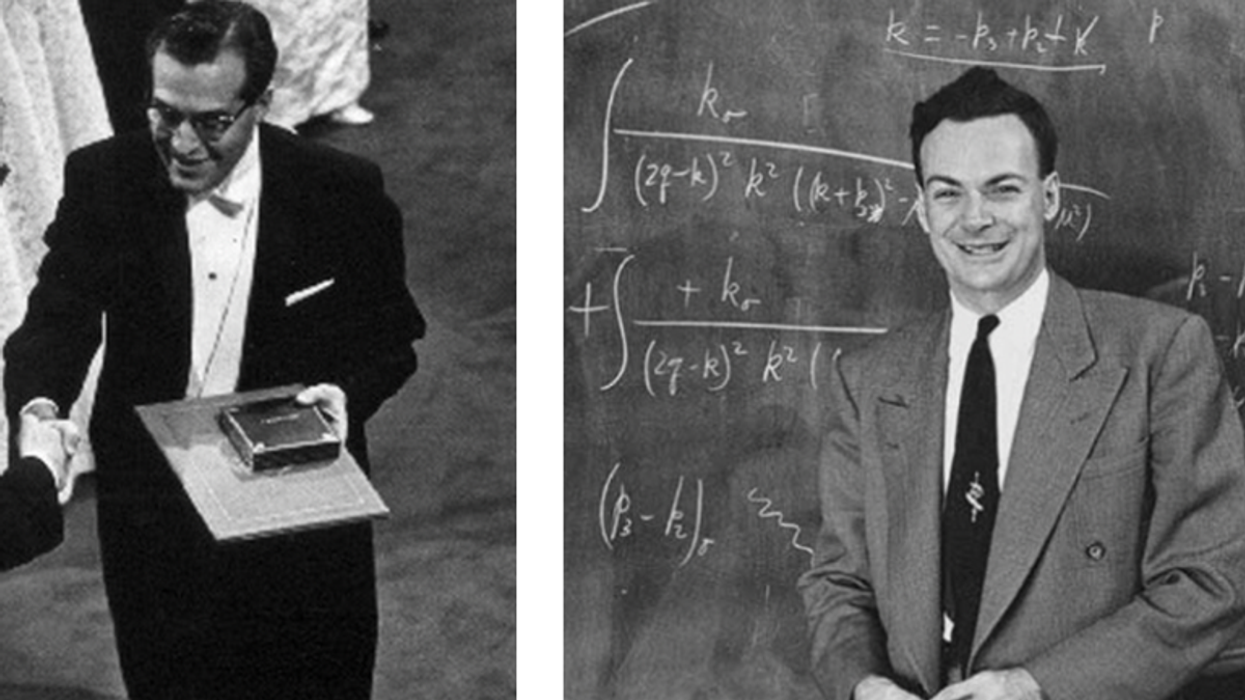Like mistletoe and ugly sweaters, the communal table is an undeniable component of any holiday celebration. Be they priceless heirlooms or thrifted card tables (perhaps artfully hidden beneath holly-embroidered tablecloths), these pieces of furniture stand witness to the most significant meals of our lives, along with the arguments, the jokes, the stories, and the prayers we share year after year. With this in mind we asked some of our favorite chefs, food writers, and culinary thought leaders to share with us their favorite memories of the communal tables that have carried their holiday feasts. Here’s what they had to say.
Molly O'Neill
Food Writer and Cookbook Author
“I live on Main Street in a teeny hamlet in upstate New York, Rensselaerville. It has about 50 houses, most from pre-colonial and colonial era. On Christmas Eve I cook either late lunch or late dinner—it depends when the church service is, which in turn depends on the weather—for the entire village. I never know how many will show up. I cook for 150 people. I set everything out on my dining room table and people come and go and serve themselves. I usually go French. Cassoulet or Bouillabaisse. This year I am making serious French onion soup, with lots of bread, cheese, a couple killer pâtés, and about a zillion cookies. The table is made of chestnut and it looks like a harvest table. But it is not a harvest table, exactly. Rather, it is a folding table that was used in the nineteenth century on the Lower East Side of New York City to sort hops. I’m told that when hops came into the city (most likely from right around here, by the way) hundreds of tables like this were set end-to-end and day laborers sorted the hops for brewers. This table is special because it is marked, so its Provenance is clear. At Christmas, the table is a buffet, but people end up pulling up chairs and sitting down anyway. It has that effect on a person.”
Louisa Shafia
“I have a handmade table a friend made for me out of an old door that I decorate for the Persian tradition of sofreh, a ‘spread’ in Farsi. It refers to the ancient Zoroastrian custom of spreading a cloth on the ground during special occasions and covering it with symbolic elements. For the winter holiday of Shab-e Yalda on December 21, I put out fruit and nuts and different snacks. You eat summer fruits for this holiday—the thinking is if you start the winter by eating some summer fruits you won’t be ill during the cold season. So interestingly, watermelon is the symbolic center of the table and the most important at Shab-e Yalda, and then you also eat pomegranate, dried fruits and nuts, or even citrus. You can also cover the table with a beautiful cloth and put out candles—they’re a light against the darkness—and a book of Hafiz poetry. The whole vibe of the holiday is to stay up till midnight (or past) and that way you’ve gotten through the longest night of the year. You read poetry, and tell stories and jokes. It bodes well for the year to come.”
Molly Yeh
Food Blogger at My Name is Yeh
“My favorite part of the holidays is my family’s annual Dumplings of the World party where we set up some folding tables, cover them in flour, and make all sorts of goodies like potstickers, pierogi, gnocchi, empanadas... It’s a mess but so tasty and fun. We need a lot of tables for these, so folding tables, our kitchen table and counter, and sometimes even the ping pong table are fair game. Using the ping pong table is great because it’s so huge and it makes us feel like we’re putting it to good use since we haven’t actually played ping pong since the 90s or something.”
Naama Shefi
Culinary Curator and Director of Communications at EatWith
“Growing up on a kibbutz in Israel, I didn’t know anything else besides eating communally. But decorating the communal tables wasn’t what we emphasized: it was very neat and clean and minimalist, even for the holidays. But conceptually, it was special. When I did my pop up dinner called the Kubbeh Project, I wanted to bring the ultimate Israeli eating experience to New York—not just the flavors and the dishes but more so the experience of sharing a table. In Israel there are these family-owned hole-in-the-wall eateries that are so special because people from all different parts of society will sit together for lunch—you share a meal, sitting next to each other. There is something different that happens when you sit literally so close to one another.”
Jeremy Goldfarb
Chef at Munchery
“My wife and I bought a house a couple years ago and for the dining room, we kept thinking about a table from our wedding—kind of a funky farm table—rustic, hand-crafted, kind of weathered-looking. The space was really open and we wanted to add a specific feeling of warmth, which we couldn’t seem to find in a store. So I actually built the farm table myself. It was the first woodworking project I’d ever taken on, and I had to teach myself how to do it. I borrowed some tools, found some wood, made the recommended cuts, and assembled it myself. Our table’s very first meal was Thanksgiving. My mom set the table that year with whiteware that’d been handed down to her over the years, which was so great since I watched her cook and plate the holidays meals as I grew up. She always encouraged me to try new things with food, and she’s probably what led me to Munchery. I’d put in some time in restaurants and wanted to do something innovative, but I also wanted to spend a little more time with my family, at holidays or just everyday family meals.”
















 Otis knew before they did.
Otis knew before they did.